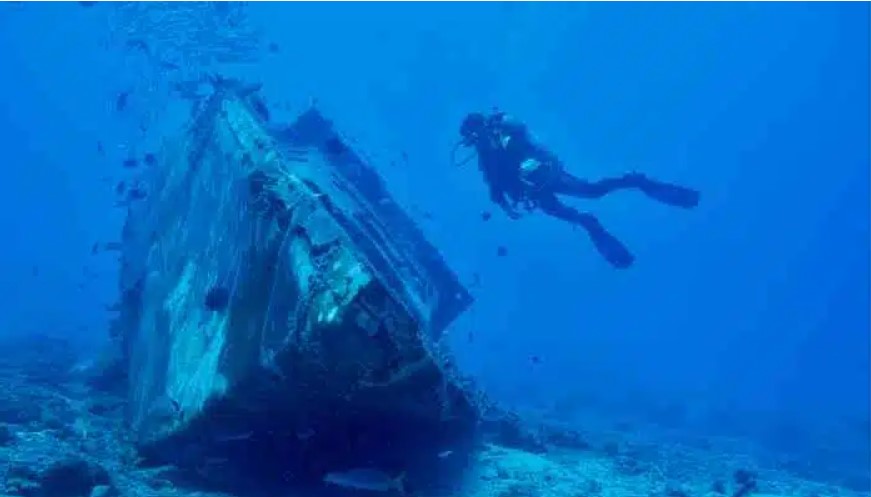
周一,来自德国北部城市吕贝克的水下考古学家在特拉维河口完成了对一艘有数百年历史的沉船的打捞工作。
归功于良好的水下能见度和天气条件,工作提前完成;原本参与这项工作的科学团队预计,从6月开始的工作将持续三个月,并在9月前完成。

▲Representation Image
船上的货物中有几桶氧化钙,被为烧石灰或生石灰,这种材料当时通常用于房屋建筑。
而下面将近170个桶,他们将在未来几天内被拖出来。Rösch解释道,渗入桶中的水可能会导致化学反应,产生高温,从而引发火灾。
初步迹象表明,该船沉没时可能正在从斯堪的纳维亚半岛前往吕贝克的航途中。
挖掘人员试图用真空吸尘器从海床上清除沉积物,最终一层一层地揭开残骸。
带到地表的碎片将被送往吕贝克的一个仓库进行记录和清洁。三维数字扫描是由被带到表面的物体制成的,这些碎片也经过处理,以防止它们迅速退化。科学家们认为,这种有效的措施将在几年内保存这一发现。
吕贝克在历史中曾经作为汉萨同盟首都,通过仔细分析残骸,科学家们希望对吕贝克的历史和汉萨同盟的贸易关系获得有价值的见解,证实其在汉萨同盟中发挥了几个世纪的领导作用。
科学家表示,这一发现可能与该市档案馆中存储的1680年沉船事件有关。
尽管多年来在波罗的海发现了许多这一时期的军舰,但在西南海盆发现这样一艘保存完好的贸易船还是引起了轰动,尤其是考虑到这艘沉船保存的完好程度。
汉萨同盟(Hanseatic League)源于古高地德语“Hanse”,意为“带”,是欧洲城市和城邦的防御和商业联盟,早在12世纪就开始于德国北部,并在波罗的海和北海的贸易中占据主导地位,直到17世纪末解散。
这艘沉船位于水面以下11米处,是在地区水运办公室(Water and Shipping Office,简称WSA)例行的调查中偶然发现的,并于去年7月公开。
即使在今天,汉萨同盟也激励着欧洲的贸易关系。
在鼎盛时期,联盟从今天俄罗斯的诺夫哥罗德一直延伸到伦敦。
Hansa成员曾经在现在的拉脱维亚、瑞典、爱沙尼亚、波兰、挪威、荷兰、比利时和德国进行贸易,吕贝克是中心。
与今天的自由港不同,积累了大量私人财富的贸易商可以享有特权和法律自主权。美洲的发现和跨大西洋贸易的兴起表明了联盟的衰落和1666年伦敦大火中伦敦钢铁厂的损失,标志着联盟的解体。
除了瓷器,在长25米、宽6米的沉船废墟中还发现了动物骨头和船上的滑车;经验丰富的考古学家Rösch很自豪地看到残骸中有一个杜松子酒瓶子。
在上面,“Londn”很可能是指英国的首都和国家的主要贸易港口伦敦。尽管它已经消亡,但联盟的想法仍在不同的迭代中继续;最近的是新汉萨同盟,也被称“为汉萨同盟2.0”,由芬兰、荷兰、爱尔兰、爱沙尼亚和瑞典的欧盟财政部长于2018年2月设立的。
英文原文
Underwater archaeologists hailing from the northern German city of Lübeck completed salvaging a centuries-old shipwreck discovered in the mouth of the Trave River on Monday.
The credit goes to good underwater visibility and weather conditions; work was executed ahead of schedule.
The scientific team that participated in the efforts had expected the work that started in June to go on for three months and be executed by September.
Among the ship’s cargo were barrels of calcium oxide, referred to as burnt lime or quicklime, a material used typically for housing construction at the time.
There are nearly 170 barrels down there; they will be hauled out over the coming few days, explained Rösch.
Rösch also added that water seeping into barrels could have resulted in a chemical reaction, generating excessive and intense heat that led to a fire.
Initial indications suggested that the vessel was likely on its way from Scandinavia to Lübeck when it sank.
Crew members excavating the ship were trying to vacuum sediment from the sea bed to uncover the remains one layer at a time.
Pieces brought to the surface are being taken to a warehouse in Lübeck to be documented and cleaned.
Three-dimensional digital scans are made of objects taken to the surface,and the pieces are also treated to safeguard them from rapid deterioration.
Scientists suggest that such effective measures would preserve the discovery in a few years.
Lübeck’s history as the capital of the Hanseatic League
By carefully analyzing the wreckage, the scientists hope to gain valuable insights into the history of Lübeck and trade relationships in the Hanseatic League — in which Lübeck took on a leading role for centuries.
Scientists say that it may be possible that the discovery relates to a 1680 shipwreck that was mentioned in documents stored in the city’s archives.
Even though many warships from that period have been found in the Baltic over the years, finding such a well-preserved trade vessel in the southwestern basin of the sea was a sensation, particularly considering the well-preserved state.
The Hanseatic League — derived from the Old High German “Hanse,” indicating band — was a defensive and commercial confederation of European cities and city-states that started in northern Germany back in the 12th century and also flourished to dominate trade in the Baltic and North Seas until it dissolved eventually in late 17th century.
The wreck, which lay 11 meters below the surface, was discovered coincidentally during usual surveying by the regional Water and Shipping Office (abbreviated the WSA) and made public in July last year.
Hanseatic League inspires European trade relations even today.
At its height, the League stretched from Novgorod in today’s Russia to London.
Hansa members used to trade in what are now Latvia, Sweden, Estonia, Poland, Norway, the Netherlands, Belgium, and Germany, with Lübeck at the centre.
Traders, who had amassed much private wealth, could enjoy special privileges and legal autonomy, unlike Freeports today.
The discovery of the Americas and the rise of transatlantic trade indicated the confederation’s wane and the loss of the London Steelyard in the Great Fire of London in 1666, marking the disintegration.
Beyond the porcelain, animal bones and the ship’s tackle were found among the ruins of the wreck, which measures 25 meters in length and six meters in width; experienced archaeologist Rösch was proud to see a schnapps bottle in the wreckage.
On it, “Londn” was likely a reference to Britain’s capital and the nation’s key trading port. Despite its demise, the idea of the confederation has continued in different iterations; the latest is in the New Hanseatic League — also famous as the Hanseatic League 2.0.
This was established by the EU finance ministers from Finland, the Netherlands, Ireland, Estonia, and Sweden back in February 2018.
免责申明:本文根据:DW, The Guardian, Hindustan Times等内容整理,如有误差,以英文为准仅代表作者观点,不代表中国海员之家立场。其真实性及原创性未能得到中国海员之家证实,在此感谢原作者的辛苦创作,如转载涉及版权等问题,请作者与我们联系,我们将在第一时间处理,谢谢!联系邮箱:cnisu@54seaman.com